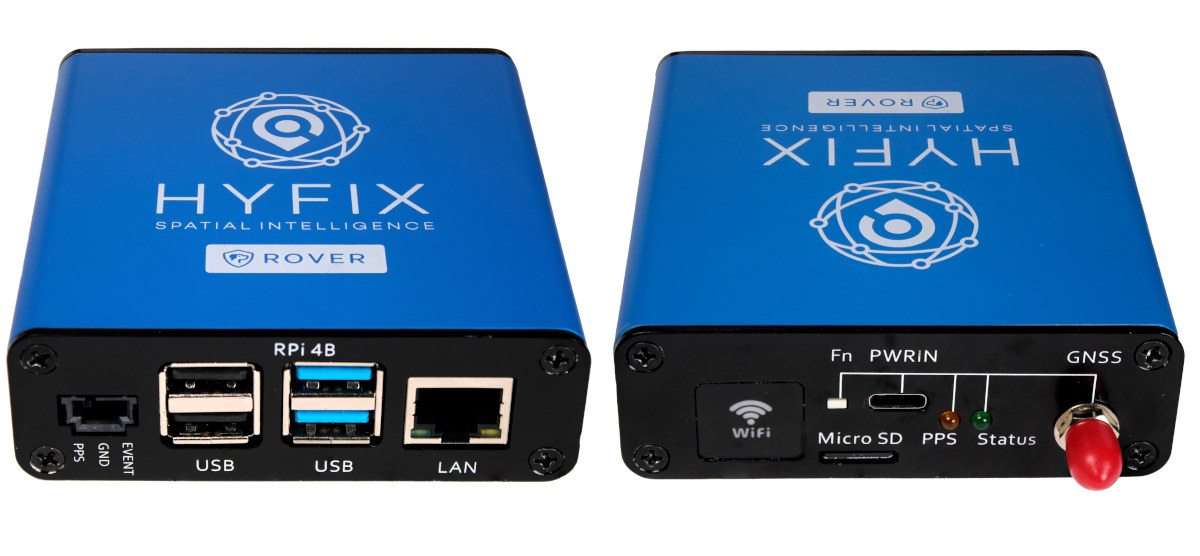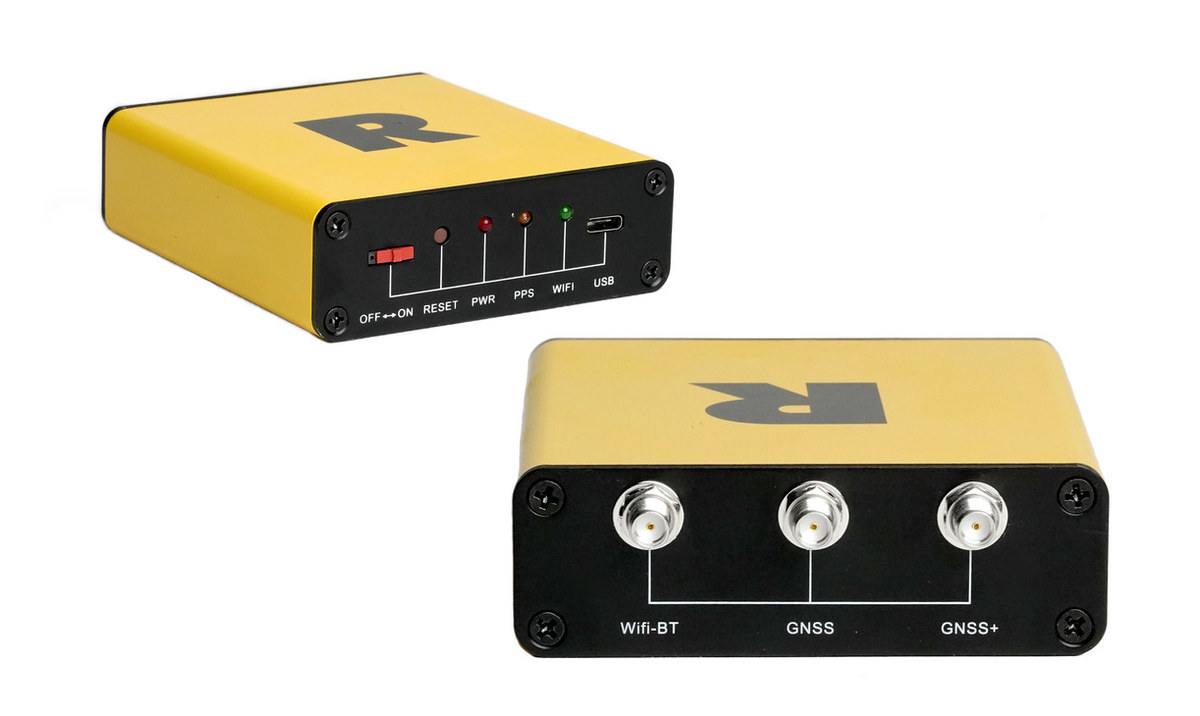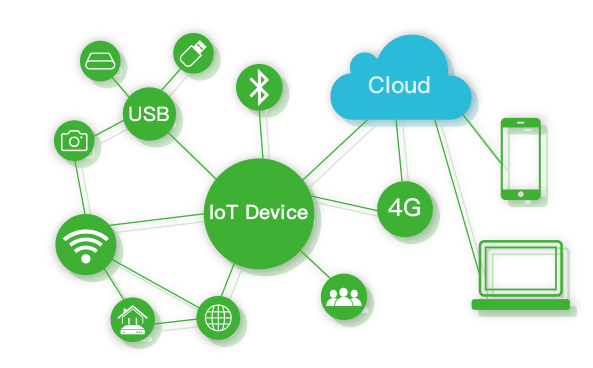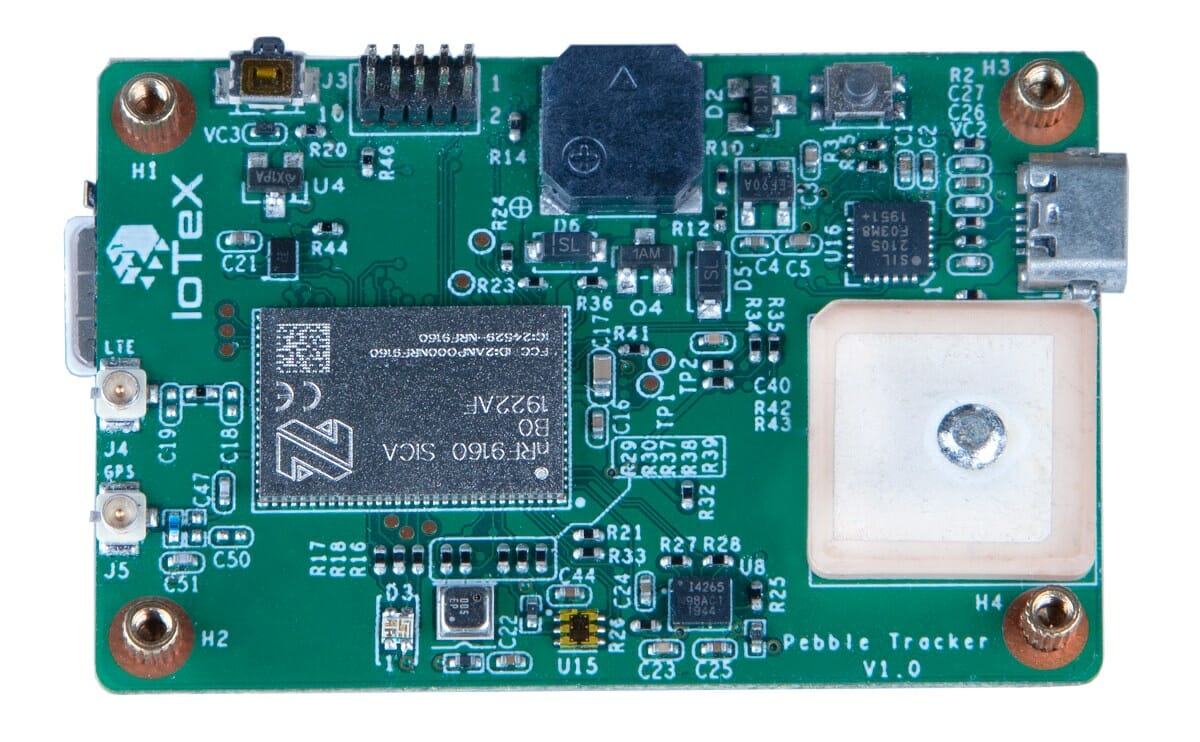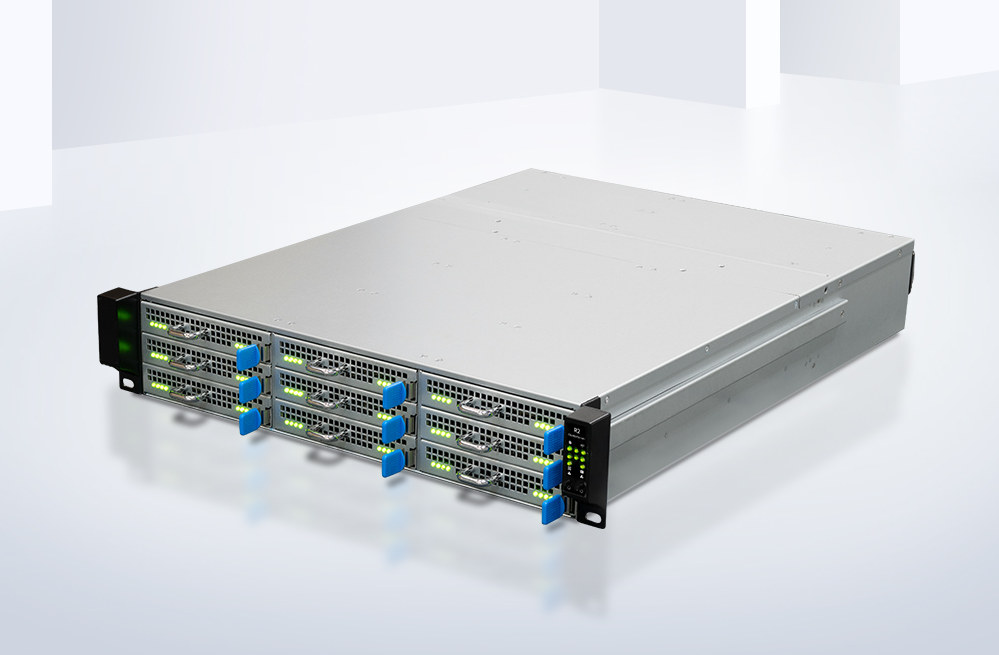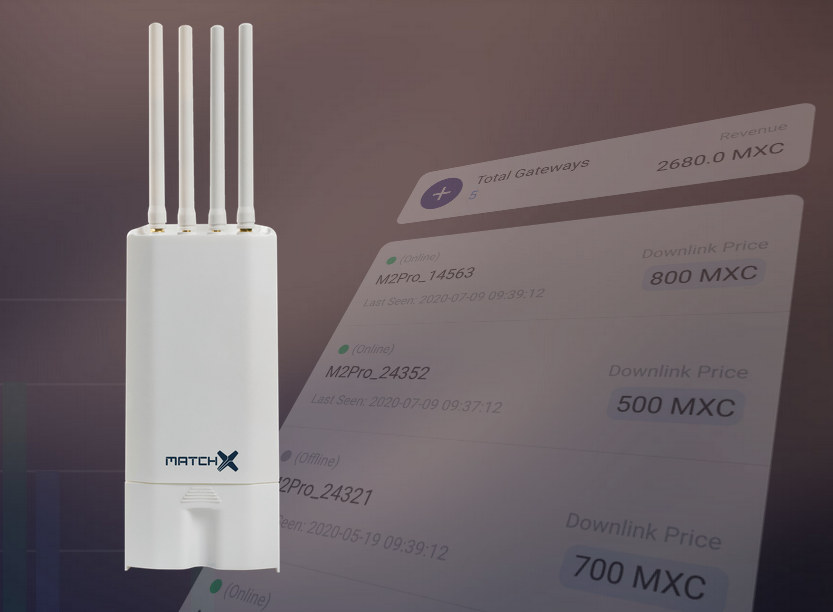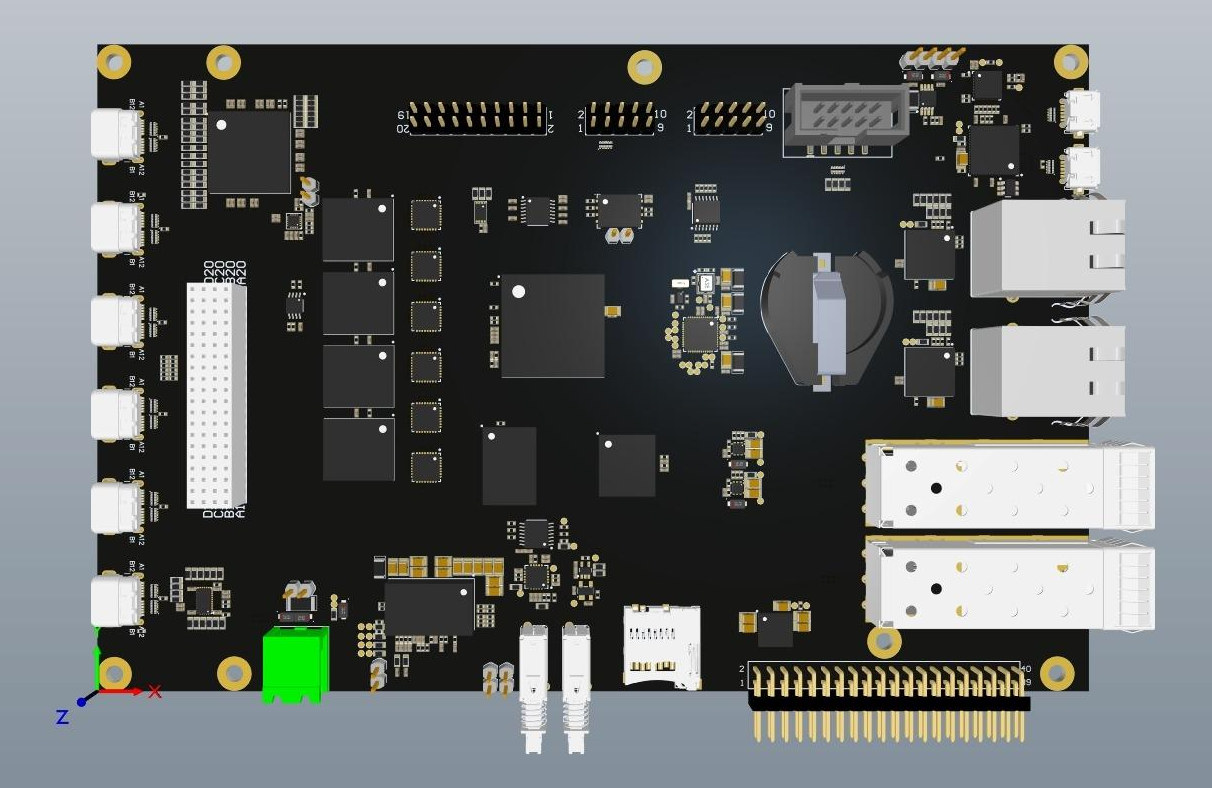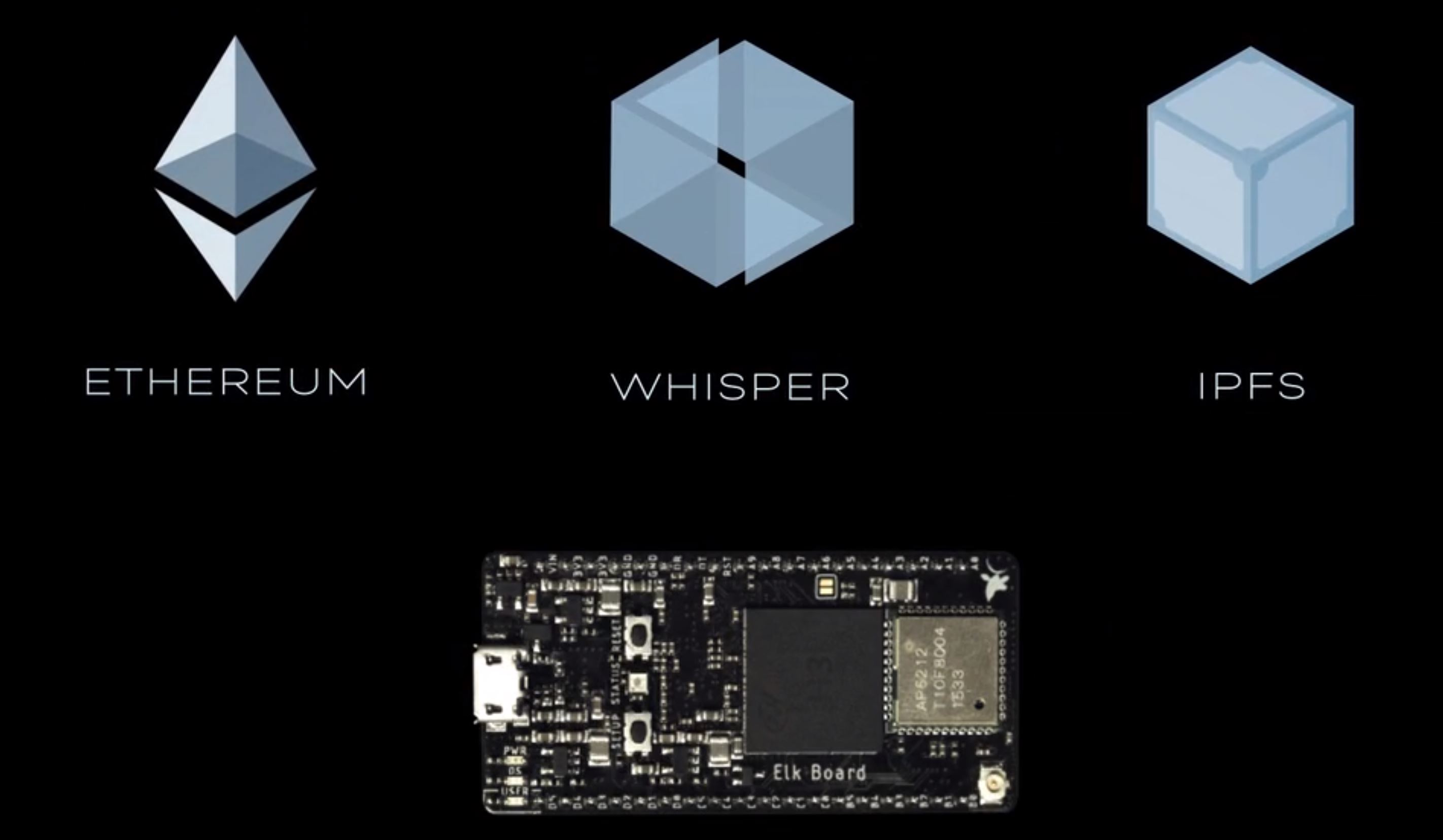HYFIX’s RTK Rover is an affordable, centimeter-accurate RTK (Real-time Kinematic) GNSS receiver with either a USB interface or/and Ethernet connectivity with the latter relying on a Raspberry Pi 4 SBC. As a reminder, RTK relies on traditional GNSS networks like GPS and works with a Base station at a fixed location and a Rover station that can be fitted to a drone or mobile robot in order to determine the position with up to one-centimeter accuracy. The RTK Rover from HYFIX is equipped with a dual-band LC29H GNSS module from Quectel and an onboard IMU sensor that tracks position through dead reckoning when GNSS connectivity is lost. RTK Rover specifications: MiniPCIe card with Dual-Band L1/L5 RTK Receiver (Quectel LC29H) Antenna – External antenna (6x5x2 cm) connected to SMA connector Sensor – IMU Interfaces USB Type-C port for power and serial Interface Ethernet Rover Kit only – Gigabit Ethernet and USB ports […]
ROCK Base triple-frequency RTK/GNSS base station works with Web3 GEODNET decentralized network
ROCK Robotic has announced the ROCK Base triple-band multi-constellation RTK/GNSS base station that works with the Web3 GEODNET decentralized GNSS reference network, with the solution designed to offer centimeter accuracy to support applications such as civil surveying, high-definition mapping, digital twin creation, and robotic solutions. Real-time Kinematic (RTK) is a relative positioning technique relying on GNSS (GPS, Galileo, GLONASS, Beidou …) and allowing centimeter positioning accuracy. The technique requires an RTK “Base station” like the ROCK Base and a lower-cost “Rover station” typically attached to a vehicle or drone. For higher accuracy, it’s also possible to use a Network RTK: Network RTK is based on the use of several widely spaced permanent stations. Data from reference stations is combined in a common data processing in a control center. The control center computes corrections for the spatially correlated errors within the network. These corrections are transmitted to the rover. Comparing to […]
HybridOS is an open-source operating system designed for smart IoT devices and cloud computing environment
As I wrote about the “Summer 2021 of Open Source Promotion Plan” earlier, I noticed a new open-source operating system called HybridOS described as “totally new” and designed for “smart IoT devices and cloud computing environment”. It’s actually more of an ecosystem than an operating system, as it offers three main components with a device side running on devices running Linux kernel or another POSIX-compatible kernel, a server side running on servers in the cloud, and a client side to manage the cloud and devices from Windows, Linux distributions, iOS, or Android. HybridOS Device Side relies on several open-source projects including: hiWebKit, the HybridOS derivative of WebKit: hiACEJS, the HybridOS derivative of OpenHarmony ACELite hiViewRenders, the renderers for hiview tag of hiWebKit hiShell, the app running environment (the shell) Various Graphics stacks including hiMesa, the HybridOS derivative of Mesa hiCairo, the HybridOS derivative of Cairo: hiDRMDrivers, DRM Drivers for HybridOS […]
Pebble Tracker nRF9160 GPS & cellular IoT platform connects to IoTeX blockchain (Crowdfunding)
Nordic Semi nRF91-series of Cortex-M33 SoCs with NB-IoT and LTE-M (eMTC) cellular IoT connectivity was first unveiled in 2018. The first member of the family is nRF9160 System-in-Package (SiP) which also comes with GPS, and we’ve found it Nordic’s own Thingy:91 devkit, as well as in various modules and development boards from third parties. There’s now a new kit called Pebble Tracker that features Nordic Semi nRF9160 with NB-IoT, LTE-M, and GPS connectivity, as well as environmental, motion, and light sensors. The cellular IoT prototyping platform works with the IoTeX blockchain to design decentralized IoT solutions with higher security. Pebble Tracker hardware specifications: Wireless module – Nordic Semi nRF9610 SiP MCU Core - Arm Cortex-M33 @ 64 MHz Storage & Memory – 1 MB flash, 256 KB SRAM Connectivity – LTE-M / NB-IoT modem with support for bands from 700 MHz to 2.2 GHz) Security – Arm TrustZone IoT SIM […]
Cluster Server R2 2U rack cluster server ships with up to 72 Rockchip RK3399/RK3328 SoMs
Rockchip RK3399 and RK3328 are typically used in Chromebooks, single board computers, TV boxes, and all sort of AIoT devices, but if you ever wanted to create a cluster based on those processor, Firefly Cluster Server R2 leverages the company’s RK3399, RK3328, or even RK1808 NPU SoM to bring 72 modules to a 2U rack cluster server enclosure, for a total of up to 432 Arm Cortex-A72/A53 cores, 288 GB RAM, and two 3.5-inch hard drives. Firefly Cluster Server R2 specifications: Supported Modules Core-3399-JD4 with Rockchip RK3399 hexa-core Cortex-A72/A53 processor up to 1.5 GHz, up to 4GB RAM, and optional on-board 2.8 TOPS NPU (Gyrfalcon Lightspeeur SPR5801S) Core-3328-JD4 with Rockchip RK3328 quad-core Cortex-A53 processor up to 1.5 GHz, up to 4GB RAM Core-1808-JD4 with Rockchip RK1808 dual-core Cortex-A35 processor @ 1.6 GHz with integrated 3.0 TOPS NPU, up to 4GB RAM Configuration – Up to 9x blade nodes with 8x […]
MatchX M2 Pro LPWAN Crypto-Miner Supports LoRaWAN and Cryptocurrency Mining
A few years ago, I received MatchX.io MatchBoX outdoor LoRaWAN gateway for review, and eventually tested it with RAK811 LoRa tracker once I got a node to play with, and made sure I did not break any local laws. But now the company has come up with an unusual gateway with its MatchX M2 Pro LPWAN Crypto-Miner that acts as a traditional LoRaWAN gateway, as well as a cryptocurrency miner. I’m a bit perplexed by the solution as miners are notoriously power-hungry, but let’s have a look. MatchX M2 Pro specifications: SoC – NXP i.MX 6UL (MCIMX6G2CVM05AB) single-core Arm Cortex-A7 processor @ up to 528MHz System Memory – 256MB DDR3 RAM Storage – 256MB NAND FLASH, optional SSD up to 32GB or industrial SD-Card Networking & Wireless Connectivity LoRa Radio – SX1302 chipsets, 16 frequency channels Supports EU868, US915, AS920, AS923, AU915, KR920, IN865 regions 2.4Ghz 802.11b/g/n WiFi 4 GPS […]
Upcoming SAVVY-V Open Source RISC-V Cluster Board Supports 10GbE via Microsemi PolarFire 64-bit RISC-V SoC
RISC-V based PolarFire SoC FPGA by Microsemi may be coming up in the third quarter of this year, but Ali Uzel has been sharing a few details about SAVVY-V advanced open-source RISC-V cluster board made by FOSOH-V (Flexible Open SOurce Hardware for RISC-V) community of developers. It’s powered by Microsemi Polarfire RISC-V SoC MPFS250T with four 64-bit RISC-V cores, a smaller RV64IMAC monitor core, and FPGA fabric that allows 10GbE via SFP+ cages, and exposes six USB Type-C ports. The solution is called a cluster board since up to six SAVVY-V boards can be stacked via a PC/104+ connector and interfaced via the USB-C ports. SAVVY-V cluster board preliminary features and specifications: SoC – Microsemi Polarfire RISC-V SoC MPFS250T with a quad-core 64-bit RV64IMAFDC (RV64GC) processor @ up to 667 MHz, a RV64IMAC monitor core, and FPGA fabric with 250K logic elements; 3.0 CoreMarks/MHz, 2.0 DMIPs/MHz; Also compatible with MPFS160T, […]
Elk, An Allwinner H3 Development board Crafted For the Decentralized Internet (Crowdfunding)
Back in 2017, Bitcoin peaked at almost $20,000; many were pretty shocked about how this supposed virtual currency suddenly become a scare resource. It also brought limelight to the technology behind it Blockchain and the idea of Decentralized internet. Although the success of the cryptocurrency didn’t last that long, as it lost about 80 percent in a year and still categorized as one of the biggest bubbles in financial history. After the crash of Bitcoin and some other similar cryptocurrencies, a lot of people predicted that’s the end of the whole Blockchain thing, and the idea of Decentralized internet will not happen. The recently announced Facebook Libra, a new cryptocurrency by the American giant Facebook, shows that Blockchain and the Decentralized web isn’t going anywhere and will probably start growing stronger. Arduino made it possible for Artist, Makers, Engineers, Students to bring ideas to life and quickly make things easier. Now, […]


